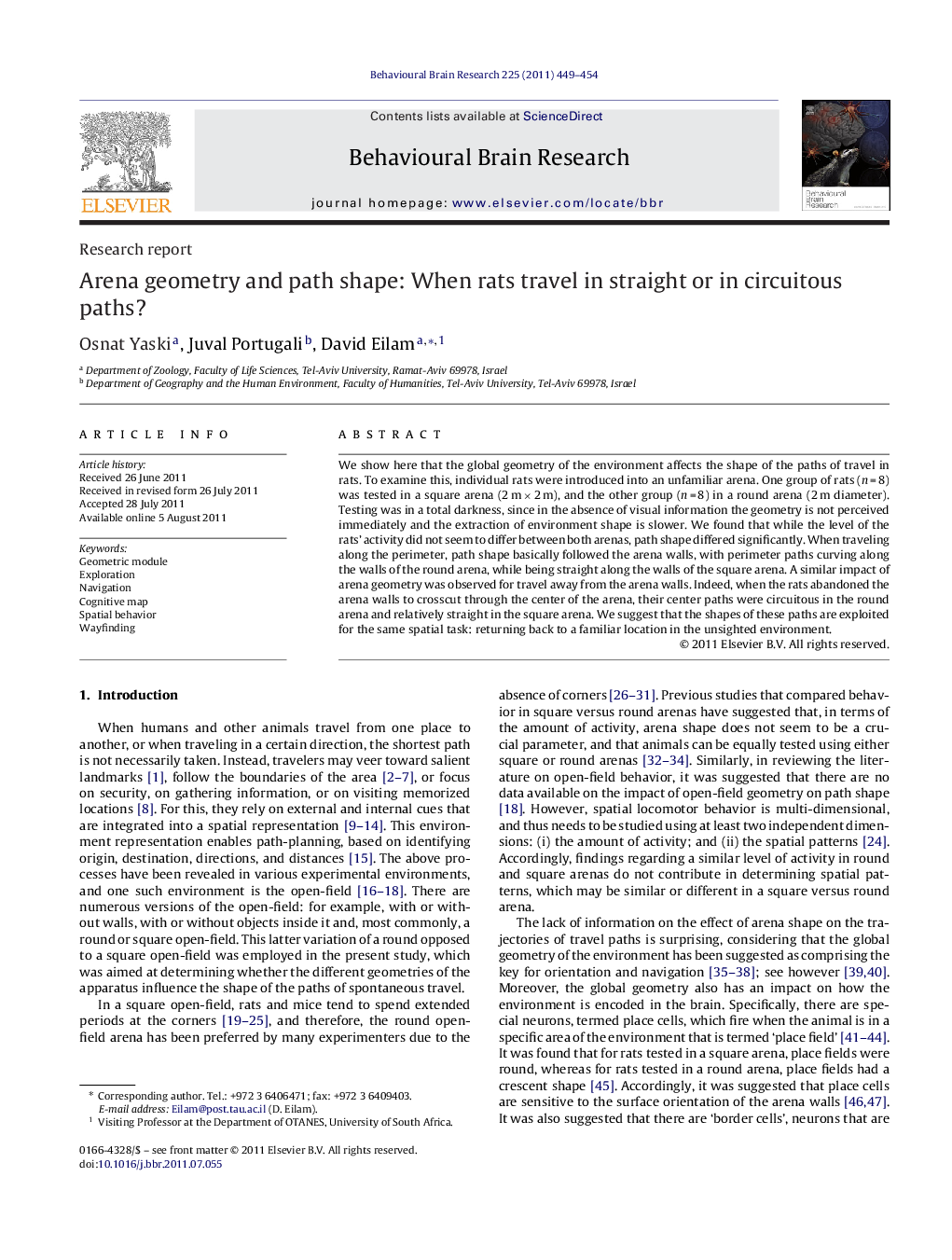| کد مقاله | کد نشریه | سال انتشار | مقاله انگلیسی | نسخه تمام متن |
|---|---|---|---|---|
| 4313573 | 1290001 | 2011 | 6 صفحه PDF | دانلود رایگان |

We show here that the global geometry of the environment affects the shape of the paths of travel in rats. To examine this, individual rats were introduced into an unfamiliar arena. One group of rats (n = 8) was tested in a square arena (2 m × 2 m), and the other group (n = 8) in a round arena (2 m diameter). Testing was in a total darkness, since in the absence of visual information the geometry is not perceived immediately and the extraction of environment shape is slower. We found that while the level of the rats’ activity did not seem to differ between both arenas, path shape differed significantly. When traveling along the perimeter, path shape basically followed the arena walls, with perimeter paths curving along the walls of the round arena, while being straight along the walls of the square arena. A similar impact of arena geometry was observed for travel away from the arena walls. Indeed, when the rats abandoned the arena walls to crosscut through the center of the arena, their center paths were circuitous in the round arena and relatively straight in the square arena. We suggest that the shapes of these paths are exploited for the same spatial task: returning back to a familiar location in the unsighted environment.
Rats travel along straight paths through the center of a dark square arena, and in circuitous paths through the center of a round arena (left). Accordingly, paths in the round arena feature greater turn angles compared with square arena (right).Figure optionsDownload high-quality image (151 K)Download as PowerPoint slideHighlights
► Rats were tested either in a round or in a square dark open-field.
► There was no difference in the level of activity in the round compared with the square open-field.
► Paths of traveling in the center were circuitous in the round arena and relatively straight in the square arena.
► Both path shapes represent adaptation for the same spatial task: returning to a familiar location in the dark.
Journal: Behavioural Brain Research - Volume 225, Issue 2, 1 December 2011, Pages 449–454